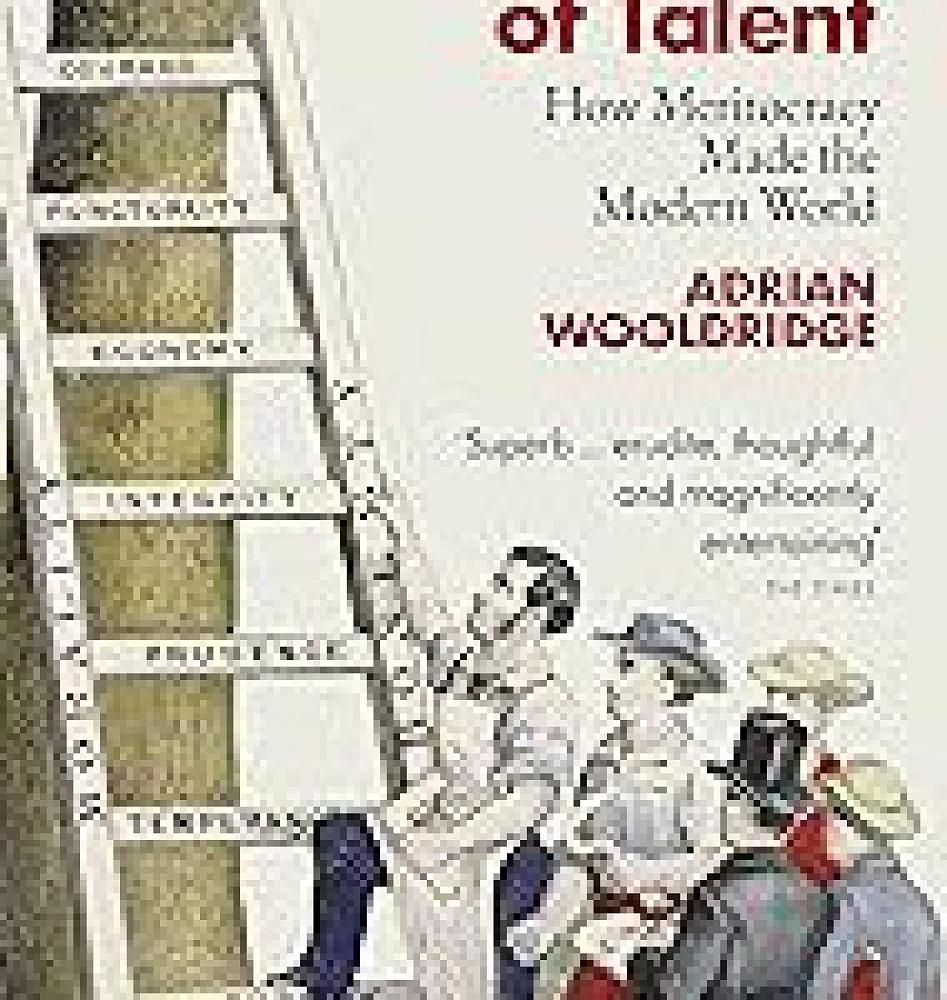
Book Review: The Aristocracy of Talent: How Meritocracy Made the Modern World
ADRIAN WOOLDRIDGE. UK: PENGUIN BOOKS, 2023. VIII + 482 PP. ISBN 978-0-141-99037-8. $23.38.
The Aristocracy of Talent is another recent text that helps us to make sense of our increasingly bewildering times by charting how a central feature of Western societies developed and how it has gone wrong. Simply stated, the meritocratic principle is that careers should be open to talents and that intelligence and hard work should be rewarded. As Wooldridge makes clear, meritocracy is a revolutionary ideal because there is a natural tendency for successful parents to protect the interests of their children as well as themselves, and dynasties and aristocracies have characterised large swathes of historical time. Plato’s Republic laid out a different and contrasting vision of a responsible ruling class that is intensely and extensively prepared for its role. Subsequently, numerous historical events have added to the meritocratic proposal, including the American Revolution, the French Revolution, the Industrial Revolution, and the liberal revolution in Britain. There have also been contributions from at least three cultural convulsions: the Renaissance, the Protestant Reformation, and the Enlightenment. Wooldridge’s romp through Western history and philosophy (with an additional side step to Confucius and the Chinese Mandarin state) preoccupies some two hundred pages. In the second half of his book, he analyses the pivotal issues of our recent past.
The author describes the arrival of psychologists and the advent of pencil-and-paper IQ tests as “perhaps the most remarkable development in the history of the meritocratic idea” (205), alongside the popular emancipations that followed the First and Second World Wars, the development of the welfare state, and the movement to knowledge-based economies. Wooldridge presents several interesting debates in his book and his analysis of psychological testing benefits particularly from the distinctive perceptions of a historian. US Army IQ tests were administered to ten million serving personnel in World War Two, and what followed were public policy changes, the widespread use of SATs (scholastic aptitude testing) in American universities and the eleven-plus tests in schools in the United Kingdom. Nevertheless, much has been written and said about IQ tests as instruments of oppression. The author says this view “is an exercise in anachronistic sermonising rather than serious historical understanding” (227). When seen in context, the new technology offered a radical reconstruction of the established social order, and it was effectively a “silent and bloodless revolution” (215). Through individual testing, groups of people had unheard-of opportunities made available to them, and included here were members of the working class and women. Moreover, Wooldridge suggests that the transformative changes for women from the 1950s onwards were driven by meritocratic commitments as much as anything, and the systematic assessment of abilities and talents assisted in these purposes.
Wooldridge typifies the problems of the times in which we live by presenting an imaginary scenario. A bricklayer is trying to get a coffee at Starbucks before starting work when a young person in designer clothes jumps the queue to order twenty extra-shot, low-fat, almond lattes. Unprovoked, the interloper then lectures the working man about being a racist, sexist bully who needs to check his privilege before he says anything. What has happened is that the meritocratic system has been corrupted by the emergence of highly educated and highly paid men and women who marry each other, who work and live in insulated professions and segregated places, who have “muscled aside anybody who doesn’t share their world view” (339), and who are adept at making every public and private system work to their advantage. Most importantly, this new cognitive elite has mastered that crucial challenge for any aristocracy: ensuring its succession through the careful education and cosseting of its children. This simplifies Wooldridge’s thesis, which also encompasses the changes that have happened to the working classes and the challenges to the meritocracy from identity politics and the political left. Nonetheless, we have an explanation here of the disempowerment many people feel and the rise of populist politics. Ironically, educational attainments, which have done so much in the past to facilitate social mobility, are now acting as a barrier to occupational success and personal fulfilment for many people. In the “diploma divide”, when a master’s degree or some other protracted vocational preparation is a prerequisite, the prizes mostly go to those who have parents who are winners themselves.
The author’s answer to the problems he has identified is for us to put the rungs back onto the ladder of success and get highly able youngsters from all social backgrounds onto the ladder through ability testing. As contentious, perhaps, is the suggestion that we need different sorts of hierarchies of achievement for students and a much more variegated education system that includes arts, technical, and academically-selective schools. There is also a message here for the cognitive elite, with their merit, money, and status, and essentially, it is Luke (12:48), “To whom much is given, much will be required.” And while Wooldridge does not make biblical references, he does state his main argument in moral terms. Ultimately, the meritocracy is justified because it is about each individual fulfilling his or her potential and becoming all that he or she is capable of. Acknowledging and respecting personal capacity and agency can lead to socially unequal outcomes. Still, it could also contribute to social cohesion when every citizen is assured of fairness and is valued for who they are.
The meritocracy’s substantial history and intellectual justifications make it apparent that those of us in Western countries are living in an age of deviation. Still, meanwhile, China and other Asian nations have enthusiastically rediscovered meritocratic principles and are deriving unparalleled rises in economic growth and geopolitical power. The significance of examinations to Asian young people is shown, for instance, in Singapore (which Wooldridge describes as “a high-tech version of Plato’s Republic,” 350) where universities have student shrines to the Bell Curve god. This consuming competition in education abroad is not a contest that can just be ignored by our schools at home. In fact, the option of allowing any of our meritocratic systems and resolutions to continue to molder has probably now passed.
Peter Stanley is a retired teacher and psychologist who lives in Tauranga.
